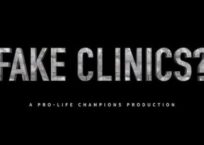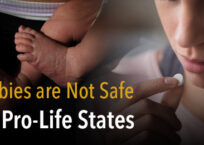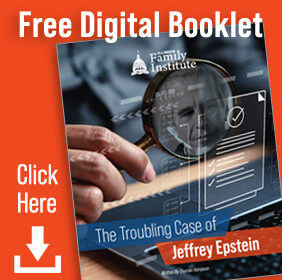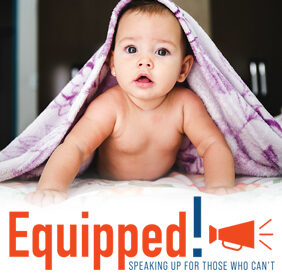
Last time, I explained the Second-Victim Narrative that mainstream pro-lifers tend to employ:
“Abortion commits violence against both women and babies.”
We saw this theme in a recent Students for Life advertisement, and it’s also lying quietly within phrases like “Love Them Both,” and “Abortion Kills One and Wounds Another.” All these phrases imply that the woman is on the receiving end of abortion instead of the giving end.
They treat women like abortion’s second victim.
This is not to deny the emotional harm that abortion inflicts on women. Take a quick glance through the Silent No More testimony directory for post-abortive women, and it won’t take long to jerk tears from your eyes as you read women telling their heart-breaking stories as they realize what they did.
Medical and chemical abortions do also pose a risk to a woman’s health and life. But these are nothing compared to the harm abortion inflicts on babies—a 100% death rate. Thus, while it may be true that some abortions do harm both the woman and the baby, pairing them up as double victims is both misleading and misguided.
This leads me to Key Truth #2 in response to the Second-Victim Narrative.
Key Truth #2: The narrative distracts attention away from the primary victims of abortion.
If a woman gets an abortion, but happens to experience no medical complications or emotional regrets afterwards (such women do exist—or at least they claim to), then what would happen to our narrative?
Put another way, if someone developed a form of abortion that harmed zero women, would we still condemn it? Of course we would. Because it would still have a 100% death rate for the children.
Here’s the absolutely frightening thing about using this second-victim tactic: When your marketing strategy is “don’t harm women,” the abortion industry just might start listening to you.
Decades and decades ago, abortions were often performed “back-alley” style, by sketchy doctors in sketchy facilities who were willing to do it on the sly. Getting a back-alley abortion actually was a threat to a woman’s health. She’d have to be willing to risk it when deciding whether or not to abort.
But nowadays, abortions are often performed by upstanding, clean, professional abortion mills—not to mention the medical giant Planned Parenthood has become. Abortions have become sanitary, efficient medical operations, and abortionists are trained with the best of today’s medical knowledge. So shouldn’t we be glad?
After all, women are one of the victims of abortion, and abortions are so much safer for them now.
I cringe at my previous paragraph, because it’s hardly fair to call a procedure with a 100% death rate “clean” or “sanitary.” But you get the point. When your marketing strategy is “don’t harm women,” you can only expect abortions to get more and more sanitary and efficient—for the women.
And they will keep on killing just as many children. If not more.
Again, none of this is to deny the spiritual, emotional, and physical harm abortion inflicts on a woman. But as I explained in my last article, the Second-Victim Narrative ignores the fact that these are consequences of an action that the woman chose to undergo.
When she chooses abortion (and remember, I’m only talking about women who choose abortion, see my first article), she is hardly a victim in the same sense that the child is. Abortion doesn’t “happen to a woman” in the same sense that it happens to a baby.
But by placing her together with the baby as a double victim, the narrative legitimizes the harm she experiences as if she were innocent along with the baby.
In sum, abortion poses infinitely more harm to the child who is certain to die than the woman who may suffer some complications. So grouping the woman and the child together as double victims slices the momentum of the pro-life movement in half.
Plus, the narrative has little hold on those women who get abortions and are unfazed about it. In addition to this, the narrative actually offers a prompt for the abortion industry to get bigger and more industrialized.
Ultimately, this abortion narrative treats the woman who chose abortion—and the child who was slaughtered by it—as if they both belong in the category of “victim.”
This marketing strategy has to stop.
Thank you for bearing with me through this difficult topic. Not many pro-lifers want to admit these things openly. But if we are going to really believe what we say we believe, we must be willing to compassionately but firmly preach the truth no matter how uncomfortable it is.
Yet, we need to take one step further. Our third key truth will, in some ways, be the most devastating of all. But it is also the one that ushers in a glimmer of hope—even for women who abort their babies.
Stay tuned for Key Truth #3.























